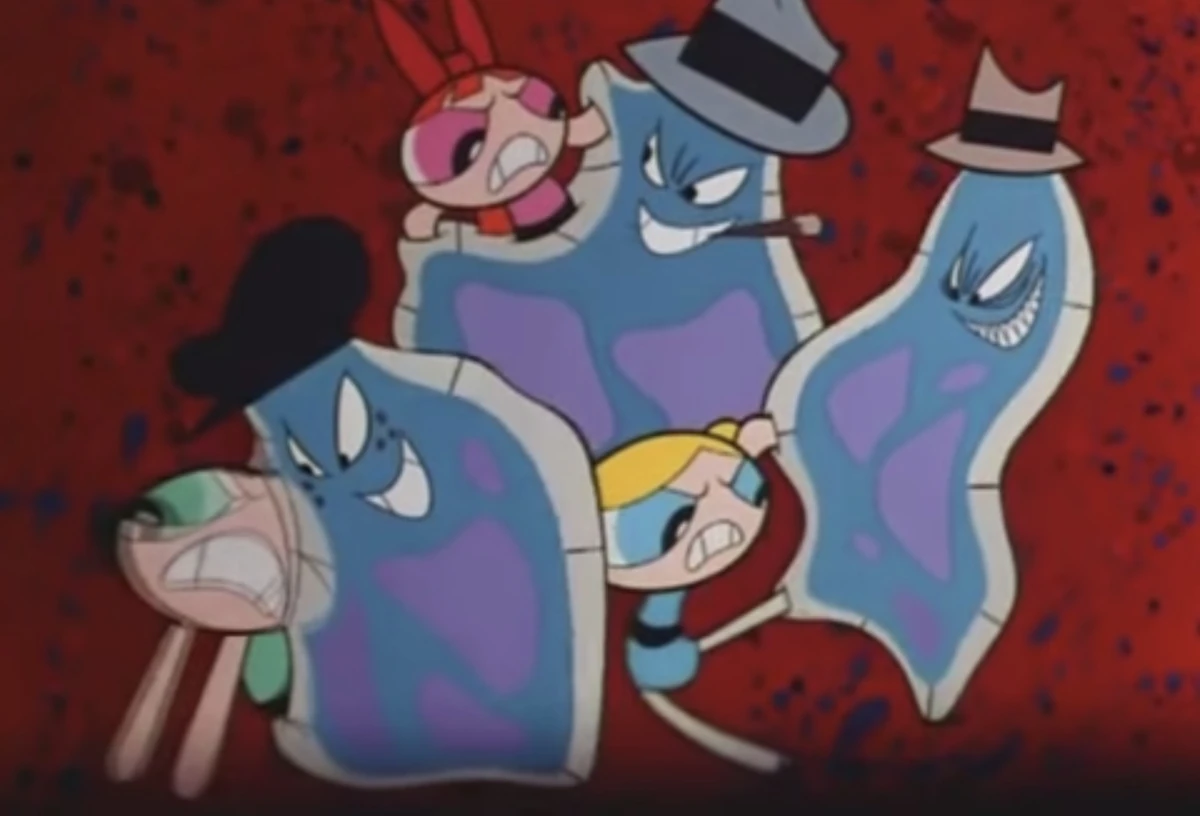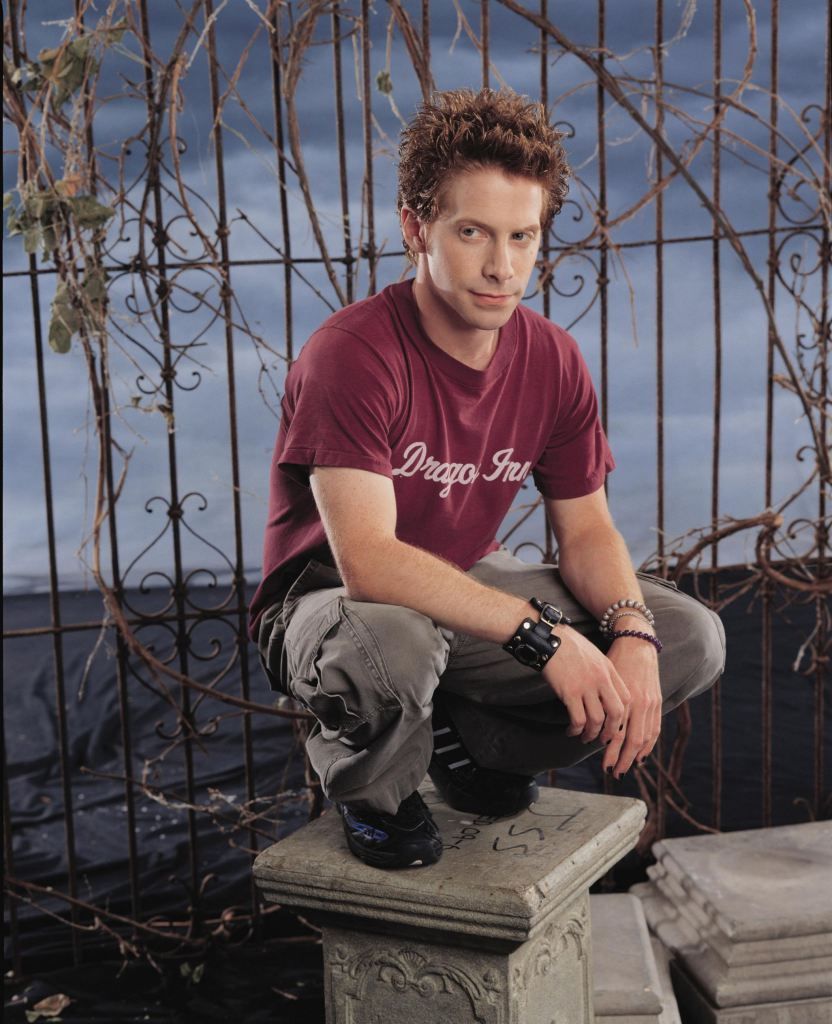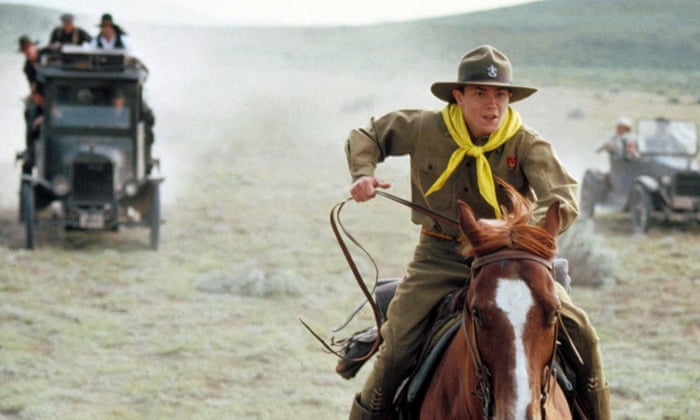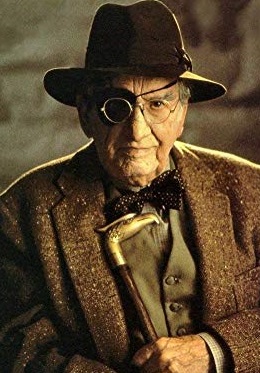Indy Comes to Television Pt. I: The Young Indy Saga (1992-1994)
From The TV Obsessive, by Hanmii Dahri-Mote, a regular column in TV Guide and other publications
In the year 1992 George Lucas, Steven Spielberg, and Lisa Henson brought Indiana Jones to television for the first time. It would not be the last. Intended as an educational show, the series brought together a host of great creative artists, actors, writers, and directors to bring the world the Indiana Jones who existed before
Raiders of the Lost Ark.
It all began when George Lucas found himself constantly being asked about what Indy’s life was like growing up. This originally manifested as the River Phoenix flashback set piece at the beginning
of The Judgement of Anubis, but soon Lucas was interested in using the power of the Indiana Jones brand for “good” as an educational showpiece. Not only would he show more of “Young Indy’s” life, he’d use the opportunity to showcase history from 1905 to 1930. This was the era of the Children’s Television Act of 1989 which on one hand mandated more “socially and educationally redeeming” television for youth, but which also included a ratings system that was allowing creative artists to push the limits of television more than before.
River Phoenix as Young Indiana Jones (Image source The Guardian)
The show began life as a partnership between Lucasfilm, Amblin, and Paramount Television, though producer Lisa Henson soon also took advantage of some contacts in the Department of Education through her mother at the Children’s Television Workshop, gaining over $2 million in federal dollars and, ultimately, partnerships with US School systems, much as had been done in the past with PBS programs like
Voyage of the Mimi[1]. It was the first private-public venture of its kind. The Department would produce and distribute educational tie-in resources and lesson plans that would cover the actual historical events that Young Indy just experienced, giving educators a chance to teach the real history (along with art, music, culture, dance, literature, and other ancillary subjects that would come up in an episode) which the show (supposedly) would get the kids excited about. Similarly, a share of the revenues would go back into the Department earmarked for poor and underperforming schools.
This partnership led almost immediately to a class action lawsuit filed by parents’ groups and competing studios. The former objected to the partnership on principle, upset to see tax dollars spent on making a TV show with for-profit businesses or seeing it as backdoor advertisements for the franchise. And many disliked the fact that some episodes were rated PG and had some adult subject matter. The competing studios, meanwhile, saw it as the government unfairly backing one private company over the others. The lawsuits eventually got thrown out due to the precedent of
Voyage of the Mimi, the fact that the actual partners were the George Lucas Edutopia Foundation and Fox4Kids Charities (rather than Lucasfilm and Fox Studios) in an ostensibly non-profit production, and the Secretary of Education Lamar Alexander himself stating emphatically that just because Triad got there “first” didn’t mean that other studios wouldn’t get their fair opportunities. This comment, of course, led to a string of such public-private partnerships, bringing us such memorable productions throughout the 1990s as Warner Brothers’
Super Science with the Justice League on ABC, Columbia’s
Civil War Remembered on CBS (which gained notoriety for occasionally dabbling in Lost Cause tropes), and Disney’s
Math Madness with Mickey and the Muppets on NBC, among others.
The production duties were soon handed off to Lucasfilm’s Rick McCallum after Lisa Henson took over as Chair and President of Fox Studios, the first woman to assume the role and only the third woman to head a major studio. Lisa continued to be involved in the production as the Studio Head, which gave her a bully pulpit that let her interject her own thoughts and ideas. Thankfully, she had a good working relationship with both Spielberg and Lucas and knew how to work around each of their quirks. In fact, they say that she, like Spielberg and Coppola, is one of the few people in existence who can tell George Lucas “No” and have him listen.
And there was a lot for them to discuss! Two big questions hung over the production: 1) how do you tell the story while passing along the educational information and 2) how many, if any, supernatural events do you include? On the later part, George Lucas’s answer (along with the Department of Education’s answer) was a resounding “no”. He envisioned this as “the true story of the real Indiana Jones that the fictional stories are based upon.” But Spielberg and Henson both pushed back. What’s the point of an Indiana Jones adventure without some fantastical experiences? The first question,
how to tell the story, would offer the solution to the impasse.
The tales would be told through a framing device where Indy himself, now in his 90s, would relate the stories of his past as part of a lesson to his grandson “Henry the 4th”, also known as “Dawg”, played by Joaquin Phoenix. Dawg is 16 and having trouble at school. He’s brilliant, but restless and running with bad crowds. He can’t really relate to his father Henry the 3rd (Dennis Quaid) or his mother Anne (Carrie Fisher), who are, in ironic polar opposite to Dawg’s grandparents Indy and Marion, very square and grounded people (Henry the 3rd is an architect and Anne a freelance editor). Dawg is also harassed by his precocious younger sister Marion (Summer Phoenix), who is the “good daughter”, a straight-A student, and very popular with her peers. Dawg, on the other hand, is more like Indy himself, a restless non-conformist, but one who lacks an outlet for his restless energy in the “settled” 1990s.
Thus, his “eccentric” grandfather Indiana is the only one who can reach him.
To play the critical role of Old Indy, Henson pressed for someone with “attitude and gravitas”, ultimately recommending classic film actor Jack Palance. Palance, who looked dashing and just a little mischievous in the fedora and eye patch, relished the role, deliberately taking up some of Ford’s mannerisms, like pointing and leaning in when he talked. Unlike Ford, however, Palance had a laid back, smug, satisfied, “seen it all, done it all” attitude, an “old cowboy who’s finally content to stay back on the ranch,” whatever restless energy and dissatisfaction that drove him in his youth satisfied by a life fully lived.
Old Indy from our timeline vs. Jack Palance from City Slickers (Image sources Wikipedia and "fiveforhowling.com")
Inspired, it is said, by Peter Falk and Fred Savage in
The Princess Bride, Palance and Joaquin Phoenix would start and end each sub-episode, add in occasional voiceover for the flashback narratives, and appear in occasional breaks from the action, typically at commercial breaks. The interruptions back into the framing story into the modern day frequently came after Indy told about some fantastical element or supernatural encounter, to which Dawg would essentially call his grandpa out on it, typically adding some exposition on what “really” happened based on established history (“mummies are just old dead bodies, grandpa, they can’t walk around and curse people!” “I know what I saw, kid.”). This allowed the production team to add the occasional fantastical element in keeping with the films, but still ground it in reality and maintain the “true historical” aspect for the primary educational purpose.
Corey Carrier as Young Indy, Lloyd Owen as younger Henry Jones, Sr., and Ruth de Sosa as Anna Jones (Image source Wikipedia and indianajones.fandom.com)
The stories, meanwhile, all flashbacks “told” by Old Indy, typically followed one of two versions of Young Indy. The first was Child Indy played by Corey Carrier, and the second was Teen Indy, played once again by River Phoenix. Phoenix, it is said, took the job “for the paycheck”, liking but not relishing the role, and using the good pay to free him to do the small, independent films and special “for the art” projects and charity work that he loved. Usually, these sub-episodes were paired in a kid/teen twin-episode following a central theme or lesson, each tied to the ultimate life’s lesson that Old Indy had for Dawg, adding PSA points for “socially redeeming value” on top of the historical and arts education. Kid Indy tagged along with his father Henry Sr. (Lloyd Owen) and mother Anna (Ruth de Sosa), going on adventures through Europe, Africa, Asia, and other parts of the world. Teen Indy would go on adventures of his own, having run away from home as a teen, with many of these adventures taking place in the trenches of the Western Front or African theater in World War I (famously punching a young Corporal Hitler in the face in one scene). But Teen Indy also had adventures in Mexico with Pancho Villa, frolics with the Lost Generation poets and artists in Paris, or other jaunts with famous historical figures. Each episode would introduce a new historical figure or two.
Several historical figures were seen, like Pancho Villa, Albert Schweitzer, Mata Hari, Manfred Von Richthofen, Louis Armstrong, Ernest Hemmingway, Walt Disney[2], Franz Kafka, and Fritz Lang. Many episodes had a guest director or guest writer, including Sam Raimi (“The Secret of the Blues”), Terry Jones (“Barcelona Blunders”), Terry Gilliam (“The Process in Prague”), Akira Kurosawa (“Samurai Secrets” costarring Toshiro Mifune and George Takei), Frank Oz (“Down and Out in the Dustbowl” costarring Steve Martin), Tim Burton (“The Dutch Angle” about Fritz Lang and the making of
Metropolis), Eddie Murphy (“Old Jim Crow”, starring Murphy himself[3]), and even Star Wars sound legend Ben Burtt (“Attack of the Hawkmen”). People like Terrys Jones and Gilliam, Tim Burton, Jerry Juhl, Frank Darabont, Lawrence Kasdan, and even Carrie Fisher contributed stories and teleplays. It became a “thing” among Hollywood writers and directors to write or direct an episode.
The Young Indiana Jones Saga officially lasted for three “seasons” and a handful of made-for-TV features in the following couple of years, though the term “season” is a misnomer since in reality the episodes largely debuted as occasional “events” and Sunday Night Movies rather than as a weekly series. With high production costs due to the star power and location shoots (offset by the use of 16 mm film, which makes modern day High-Definition remastering impossible) it was always a marginal production and labor of love which helped to boost PFN’s ratings during critical sweeps periods and gained tax incentives via the charitable/educational connections, but it was never going to be a cash cow. Indiana Jones merch reportedly saw only a modest bump in sales.
Millions of American school kids in the early 1990s, along with many others in other nations who made their own educational partnerships, may remember the worksheets with River’s face on them or the many “lesson plans” tied to each episode. You might recall learning about the Lost Generation through Young Indy hanging with Ernest Hemmingway, Gertrude Stein, and James Joyce. Or you may recall learning about Egyptology with Kid Indy or the horror of the Belgian Congo with Indy and Al Schweitzer.
And how much of it stuck? Did we really learn anything, or was it all, as many have accused, a back-door commercial for Indiana Jones merch? Well, I
can say that I remember things I might not have known otherwise. I’m sure my Podunk public school would never have taught me who the Hapsburgs were, none the less who Princess Sophie of Hohenberg was. Sure, it wasn’t AP History, but it did give many of us an interest in history, art, or literature that we might otherwise not have had (I can all but guarantee I’d never have read Gertrude Stein without this show).
Either way,
The Young Indiana Jones Saga holds a special place in TV history as a multipart “edutainment” show, the first big public-private television educational collaboration, a reflection of the changes that the 1989 Children’s Television Act were bringing, and a milestone event in the memories of many school kids who suddenly got to play Indiana Jones in the classroom and not get sent to detention. It led directly to similar public-private edutainment opportunities.
And it eventually led to my next article about the
second time that Indiana Jones came to television!
See you then!
[1] Featuring a child actor from Boston named Ben Affleck!
[2] Appears briefly as an ambulance driver alongside Hemmingway. Disney’s Grandson Chris Miller plays him.
[3] Murphy’s character and Indy need to team up to prevent a lynching. It’s a pretty brutal PG-rated episode that did not try to hide the racism and had some warnings.






